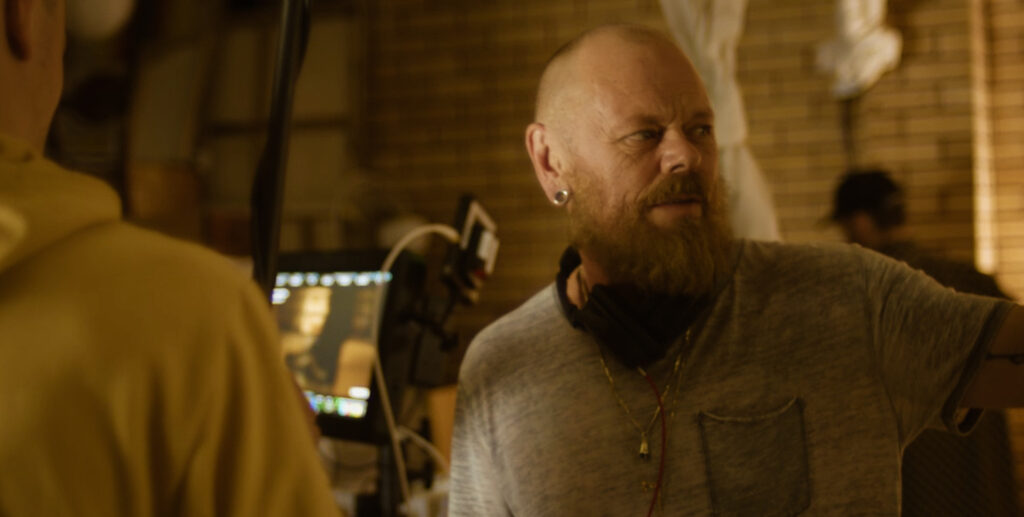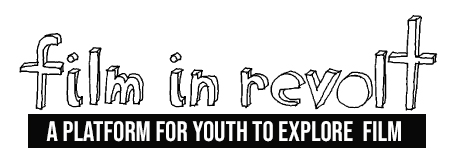
Kena from Film in Revolt chatted with filmmaker Craig Boreham about his latest film Lonesome, screening at the Melbourne International Film Festival. Kena and Craig last met up with the release of Craig’s debut feature, Teenage Kicks.
Kena: You have just been screening Lonesome in America and the big wide world, how was that!
Craig: It was good! It was great to be travelling again, the screenings had great audiences. Mexico was wild…
Yes I was following on Instagram, it looked crazy!
Yeah, it went really well! It was really amazing to screen at the Castro Theatre in San Francisco – such an iconic, queer, historic venue and Iʼd never been there before. There was a huge audience, they were really vocal with their gasps and laughs.
As a Director it would be really nice to get such audio feedback from a live audience.
It was really nice! Itʼs one of my favourite things – I prefer to watch the audience. In fact, I usually hide outside and then sneak in to see how theyʼre reacting to certain parts.
Well I wanted to start by talking about Lonesomeʼs relationship to your earlier film Teenage Kicks, if there is one. How do you see them together, is Lonesome an evolution of Teenage Kicks? Or, are they just two really great Aussie gay movies that we donʼt have anywhere else so of course I would put them together in my brain…
Itʼs hard to think of how they speak to each other… I guess there are common threads that Iʼm interested in: queer people in the margins. People who are queer outside of the dominant community is something that interests me and interrogations of the way Australian gay men perform masculinity, too. Both of those films explore that in different ways. Lonesome is quite a different film, I think itʼs funnier and more naturalistic. Though Lonesome has more elements that are heightened, itʼs an almost camp world, it pulls on some genre tropes like Western tropes, queer cinema tropes, a little more than Teenage Kicks does.
Following on with some differences between both films, Lonesome is very open, very exposing and very real because of it; itʼs real and lifelike, especially in the sexual realm. It explores more about the casual gay sex experience in Australia or maybe Sydney specifically – why did you want to explore those aspects and tell that story now?
I like exploring gay menʼs relationship to sex and the way it is used. It can be transactional, it can be about relieving boredom or be about connection, or aggression… Thereʼs a lot of different ways gay men use sex and I wanted to explore that. Thatʼs a big part of the tone of the film – I didn’t want to pan away to a tree whenever there was a sex scene, I wanted to stay with it and see those little micro-moments that happen between those interactions.
It dives right in there, it gets in amongst the sweat and skin and that was an intentional part of the plan.
When I was working with the actors and the cinematographer about how we were going to shoot those scenes that was always part of the conversation. It was in the script, even, right from the get-go. We were very explicit about what we were seeing, what were the moments we wanted to capture. Those sex scenes have emotional story beats in them, too! Itʼs not like itʼs just a sex scene; itʼs important to help drive the story along.
Yes! That was going to be my next question, about how real and exposing Lonesome is with its nudity and sexual intimacy. Weʼre seeing the whole scene play out… Does that affect who can and canʼt see the film, rating-wise? And how do you feel about that?
On the festival circuit we have been okay, but maybe when we start to look at streaming services there might be some questions about that, though itʼs our hope that they wonʼt ask us to cut anything. The distributors we are working with all believe in the film and donʼt want to cut it. It does mean that it will have a certain rating that will limit who can see the film, but thatʼs always a reality of filmmaking.
One part I really liked was when our two main characters were going to get an STI test at ACON. We rarely get to see a full, real, queer sex scene on screen but even more rarely do we get to see them going to get tested, and I loved that reality! Why not show the whole STI test procedure? The rest of the movie is happy to expand upon lots of other elements of the gay experience, particularly the sexual intimacy, which I really enjoyed. But why not also with the STI test at ACON?
It was pretty much a timing issue. If it were a TV series I definitely would have given it a good 15 minutes. Because itʼs actually a really stressful thing for a lot of young queer people who have never had that done before, and so it can be a dramatic and intense moment. Also in terms of the story, that scene functioned as a way for Tib to show Casey the way things work in the big city. But it would have been great, I would have loved to give the ACON test worker another 10 minutes on screen because heʼs hilarious.
Why shoot in Sydney? I loved seeing so much of my home city on the screen, recognising Oxford Street, Darling Harbour and was that Victoria Park pool?
It was Prince Alfred park pool, actually, and I love that sequence. I think Sydney is a really nice city to shoot in, weʼve got lots of interesting landscapes. Weʼve got the beaches, and itʼs nice to shoot Sydney in a way that we donʼt normally see it – I didnʼt want to shoot a postcard Sydney. I wanted to capture the backstreets of Sydney; Tibʼs view.
We also harked back to a lot of western tropes, the image of a cowboy in a landscape and how to recreate that in an urban environment.
Cliche question, but always a good one for indie filmmakers like yourself, what was your favourite, or most challenging scene/take to shoot and why?
I think the first scene where they just hang out and talk was one of my favourite scenes to shoot. I love working with the actors, itʼs nice to just watch a relatively long, dialogue-driven scene be carried along by the actors. But other little moments like the swimming pool moment or the visual montage when theyʼre on the roof… That was a very spontaneous shoot, we had about 10 minutes when we noticed the light on the roof was so beautiful. We were all downstairs at the time and then ran upstairs to get that shot. And it became the poster of the movie!
Whatʼs the next installation, if there is one in the works? I feel like you perfectly capture a very specific Australian gay experience that we donʼt see anywhere else, and I want more!
Iʼm working with Peter Polites, the author who wrote a novel called Down the Hume and weʼre adapting that for screen. Itʼs a gay neo-noir set in Western Sydney, an amazing book. Weʼre meeting today actually, to work on the final touches of the outline and itʼs looking really good. Iʼm very excited about it!
Do you have any advice for budding queer filmmakers, maybe particularly in Sydney or particularly queer ones?
Just keep at it! Keep networking. I think whatʼs great about the queer community in Australia is that everyone is pretty generous, and reaching out to people is a good idea. We all kind of know each other and are really excited when someone else has a win. Itʼs less competitive and more supportive than the mainstream film community. Iʼd just say keep at it! I think weʼre in a much better landscape for queer storytelling than we were five or ten years ago, because people are starting to realise that there are audiences for queer films. Ten years ago people said it was ʻtoo nicheʼ… ʻwe donʼt wanna support thatʼ, you know? But now, niche is good! It actually means thereʼs an audience!
Iʼm excited to see how that continues and unfolds.
Beautiful. Thank you so much for talking with me Craig, itʼs been a pleasure. And Iʼm sure weʼll speak again when your next one comes out! But for now everyone, Lonesome is selling fast at the Melbourne International Film Festival NEXT WEEK, screening on Wednesday 10th August at 8:30pm, and Friday 12th August at 9:15pm, so snap up your tickets now!
